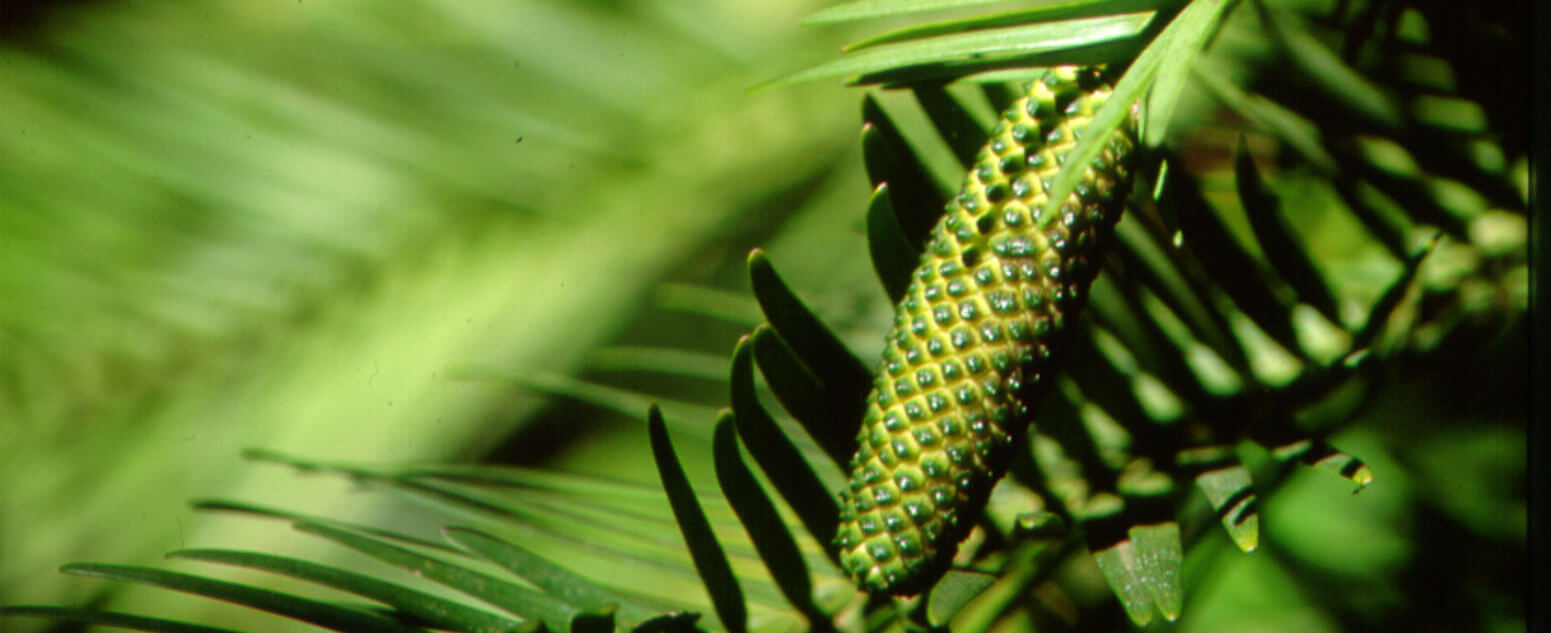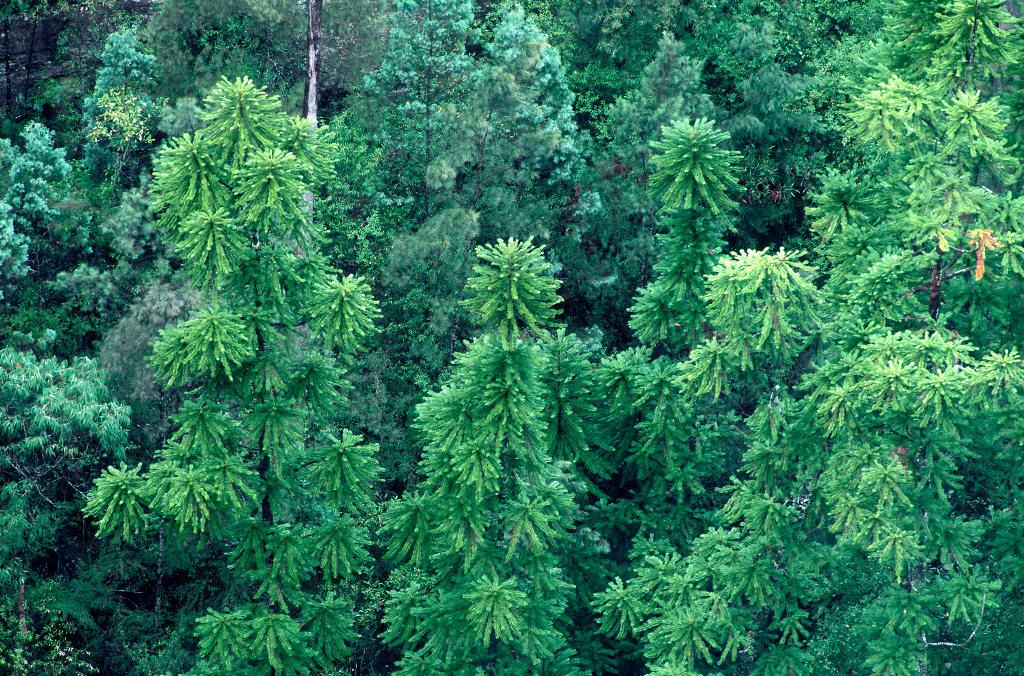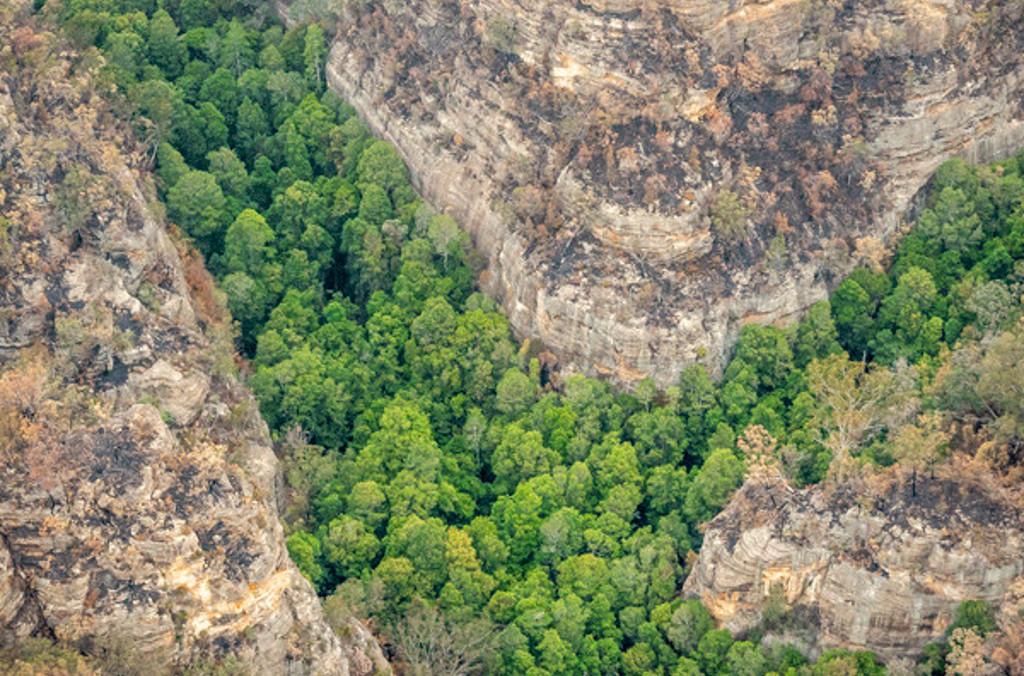Human beings are the biggest threat to the Wollemi's survival. One visitor to the site with dirty boots could destroy the population by introducing root fungus pathogens.
Since there are so few specimens in the wild, a thorough management strategy has been developed to protect them called the Wollemi Pine Recovery Plan which includes:
World Heritage listing (the Wollemi National Park is part of the Greater Blue Mountains World Heritage Area).
Protection under the NSW Threatened Species Conservation Act 1995 and the federal Environmental Protection and Biodiversity Conservation Act 1999.
Memorandum of Understanding between NSW National Parks & Wildlife Service and the Botanic Gardens Trust to manage the wild populations and develop a cultivation and propagation program.
Not revealing the exact location of the known stands to others, except for genuine scientific research teams.
Minimising the number and duration of visits to the site and avoiding trampling seedbeds and seedlings, compacting soil and introducing disease.
Introducing special precautions during scientific field trips, for example, anti-microbial boot washing to ensure the exotic root rot pathogen Phytophthora cinnamomi and other diseases aren’t introduced to the site.
Monitoring the sites to guard against unwanted and perhaps destructive visits by bushwalkers and collectors and liaising with neighbours to the national park who help with site protection.
Studying the ecology of the species in the wild to identify issues critical for new growth and the survival of the species under a range of disturbances such as fires, floods, rockfalls and treefalls.
Undertake special remote firefighting operations to protect the wild population from bushfires (which occurred in January 2020 and saved the trees).
Establishing botanical research and horticultural development projects.
Licensing commercial propagation to increase the “captive” population.
Discover more about the conservation work of the Wollemi Pine in this video.
Ancient future - saving the Wollemi pine
Explore the image gallery below for some examples of the management strategies.
Conservation Science at the Australian Botanic Gardens Mount Annan
The Botanic Gardens Trust established a new population of Wollemi Pines at a new location in 2012. Why? The three sites with Wollemi Pines are all in the same catchment in the Blue Mountains, and so the risk of losing the entire wild population of Wollemi Pines in a single catastrophic event, like a fire, is high. Establishment of a new population some distance from the original population reduces this risk, following the principle of 'don’t keep all your eggs in one basket'.
One hundred and ninety-one Wollemi Pines were planted at the new site in August 2012. The translocation site in the Blue Mountains was chosen because it matched the warm temperate rainforest community characteristic of the wild site and had land tenure that was secure in the long term. Because of research indicating that seedling growth increased with light, at the translocation site, the seedlings were planted along a light gradient, from deep in the rainforest (like the wild site) up to the woodland-rainforest edge.
So far, the survival rate of the translocated seedlings is 83% - with higher survival where there is more available light. Moreover, some plants have shown growth rates of almost 30 cm (in height) per year, much greater than the 1–2 cm per year seen in the wild. Monitoring of the translocated population is ongoing, and we can’t wait until these plants grow to produce seedlings of their own.



